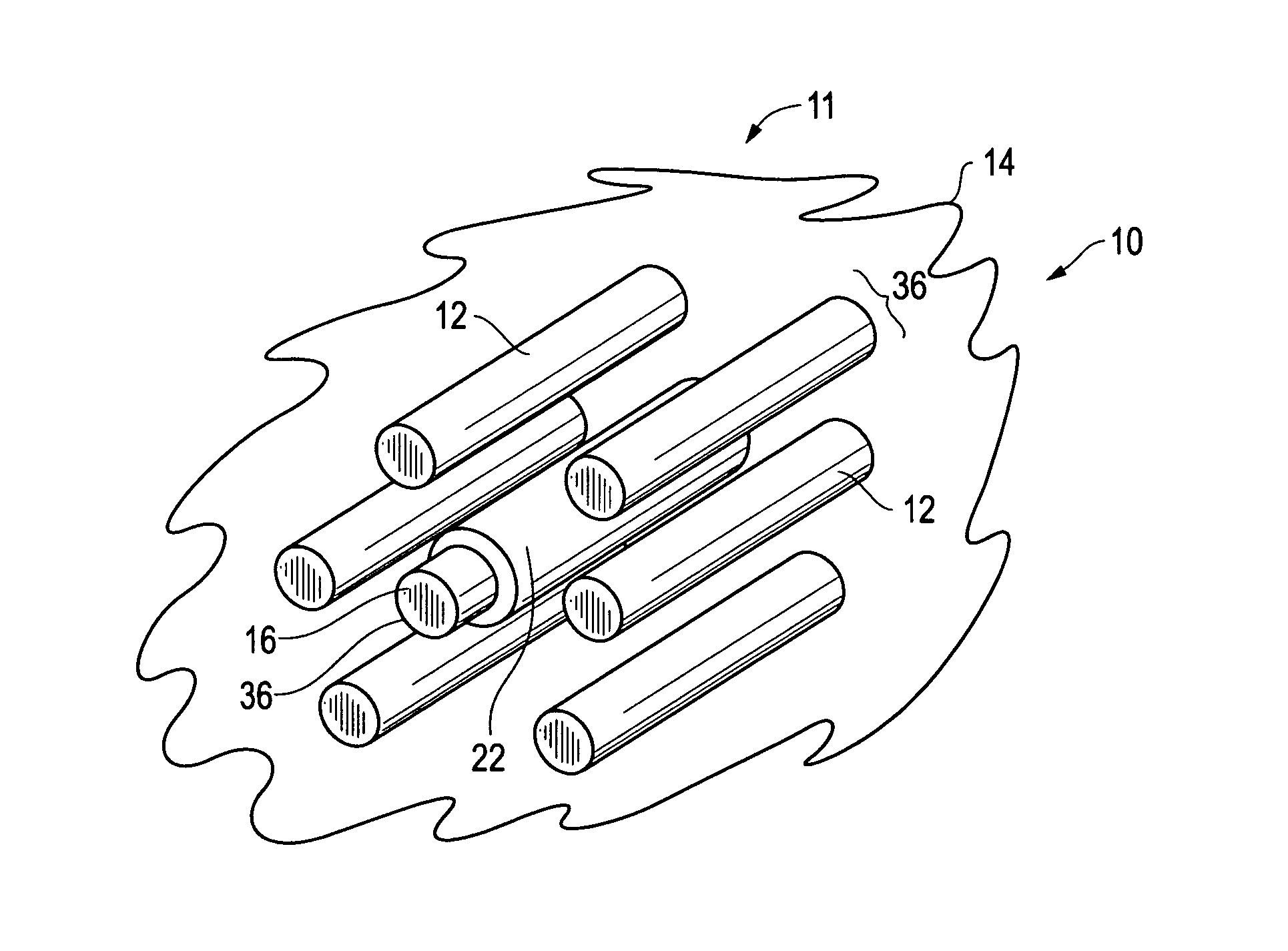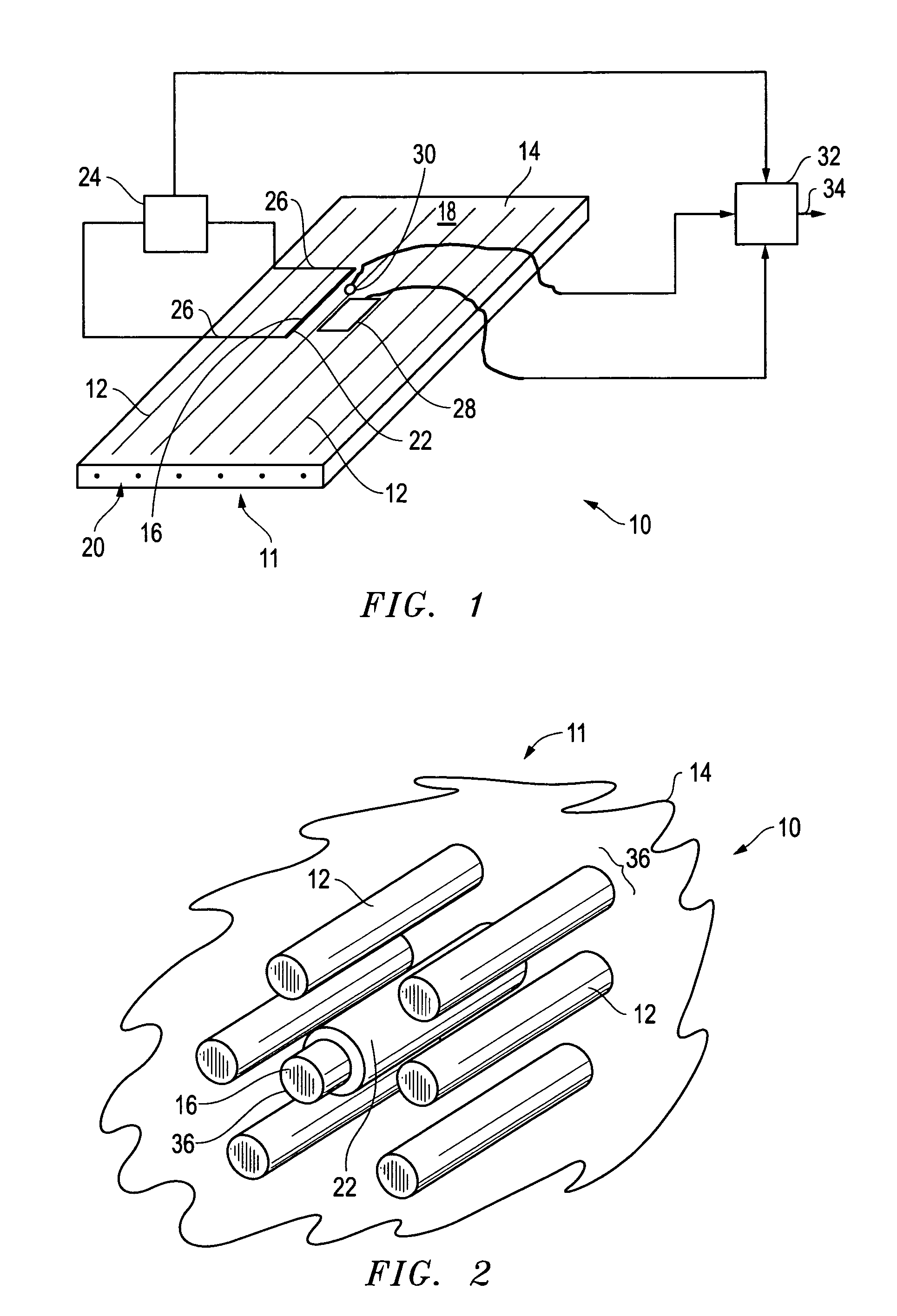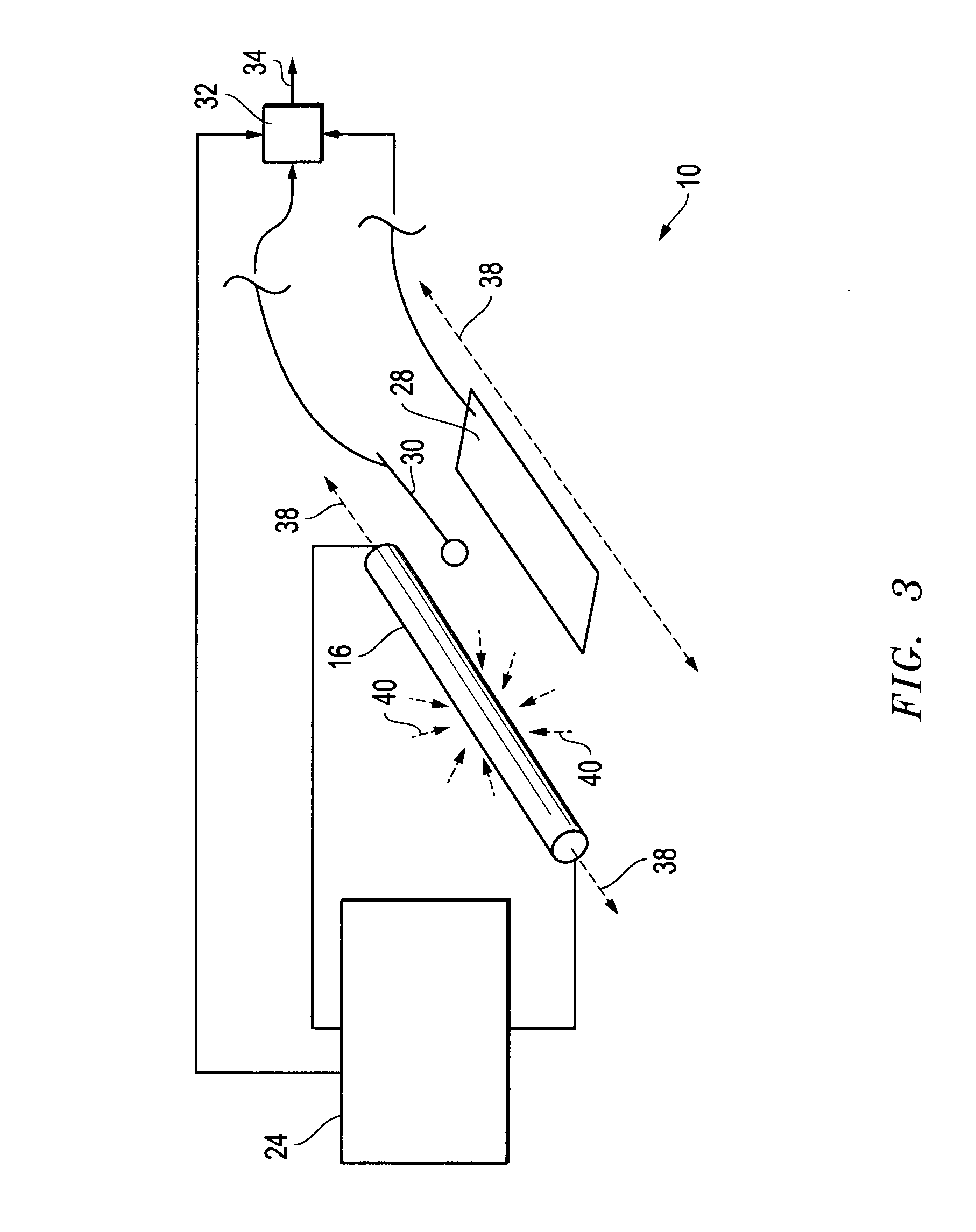Insulated fiber sensor apparatus and method
a fiber sensor and fiber technology, applied in the direction of resistor details, resistor housing/enclosement/embedding, instruments, etc., can solve the problems of reducing the mechanical performance of composites during the service life of composite structures, not having effective and efficient methods to measure the deformation (or strain) of fibers
- Summary
- Abstract
- Description
- Claims
- Application Information
AI Technical Summary
Benefits of technology
Problems solved by technology
Method used
Image
Examples
Embodiment Construction
Definitions
[0042]Terms as Used Herein:
The term “in-situ” is defined as the event occurs and is measured at nearly the exact or exact physical location of the fiber sensor in the composite.
The term “micro-level” is defined as the scope of length scale the same or nearly the same as the fiber whose diameter is of micrometer scale.
The term “carbon fiber” is defined as the fiber made of nearly pure carbon or graphite and its diameter is of micrometer scale.
The term “sensor” is defined as an apparatus and method for detecting or measuring physical changes of an object or system.
The term “coating” is defined as a thin layer of polymer, ceramic, glass, diamond or the like, deposited on the fiber.
The term “insulation layer” is defined as the polymer coating, ceramic, glass, diamond or the like, deposited on the fiber to prevent electrical current leak from being conducted between the coating insulated fiber and its surroundings.
The term “strain” is defined as the change in distance between ...
PUM
| Property | Measurement | Unit |
|---|---|---|
| Gage Factor | aaaaa | aaaaa |
| Gage Factor | aaaaa | aaaaa |
| diameter | aaaaa | aaaaa |
Abstract
Description
Claims
Application Information
 Login to View More
Login to View More - R&D
- Intellectual Property
- Life Sciences
- Materials
- Tech Scout
- Unparalleled Data Quality
- Higher Quality Content
- 60% Fewer Hallucinations
Browse by: Latest US Patents, China's latest patents, Technical Efficacy Thesaurus, Application Domain, Technology Topic, Popular Technical Reports.
© 2025 PatSnap. All rights reserved.Legal|Privacy policy|Modern Slavery Act Transparency Statement|Sitemap|About US| Contact US: help@patsnap.com



